Discover 11 hidden attractions, cool sights, and unusual things to do in Lexington (United States). Don't miss out on these must-see attractions: Lexington Battle Green, Buckman Tavern, and Hancock-Clarke House. Also, be sure to include Follen Church Society-Unitarian Universalist in your itinerary.
Below, you can find the list of the most amazing places you should visit in Lexington (Massachusetts).
Table of Contents
Lexington Battle Green

Historical place in Lexington, Massachusetts. The Lexington Battle Green, also known as Lexington Common, is the historic town common of Lexington, Massachusetts, United States. It was at this site that the opening shots of the Battles of Lexington and Concord were fired on April 19, 1775, starting the American Revolutionary War. Now a public park, the common is a National Historic Landmark.[1]
Address: Massachusetts Ave., 02420 Lexington (Lexington)
Buckman Tavern
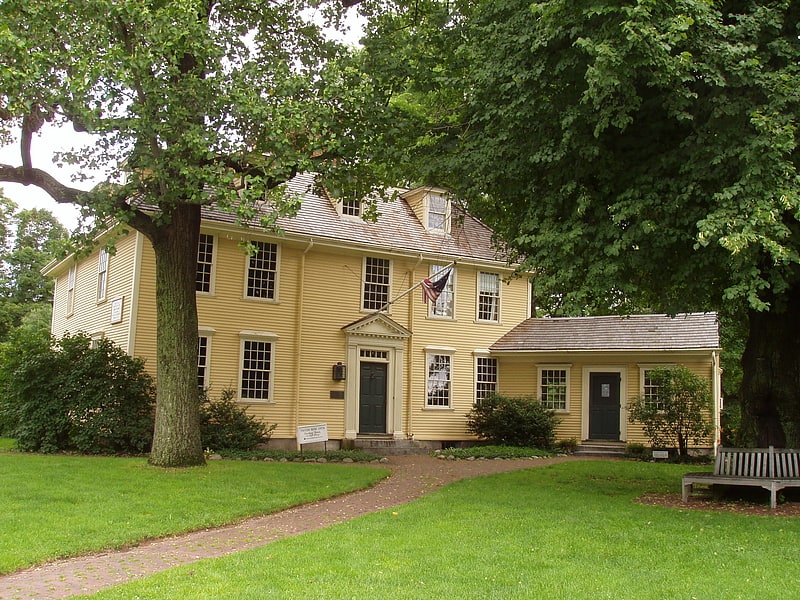
Museum in Lexington, Massachusetts. Buckman Tavern is a historic American Revolutionary War site associated with the revolution's very first battle, the 1775 Battle of Lexington and Concord. It is located on the Battle Green in Lexington, Massachusetts and operated as a museum by the Lexington Historical Society.[2]
Address: 1 Bedford St, 02420-4339 Lexington (Lexington)
Hancock-Clarke House
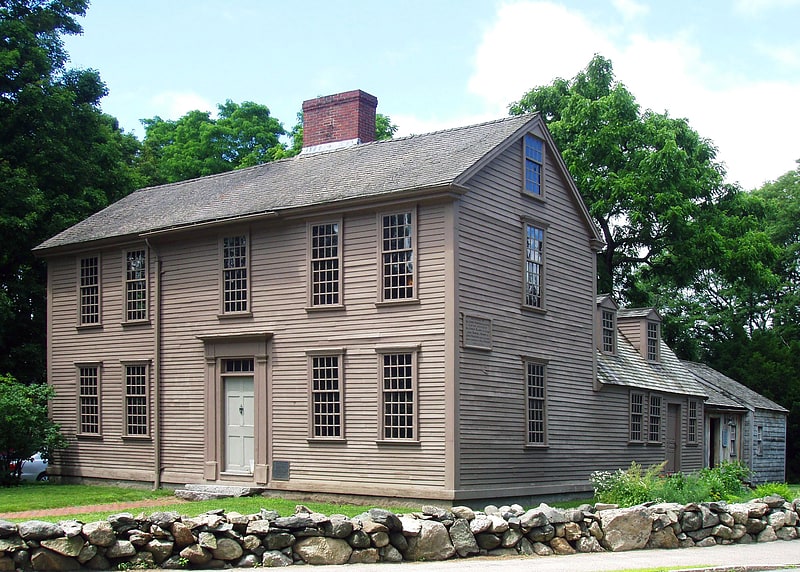
Museum in Lexington, Massachusetts. The Hancock–Clarke House is a historic house in Lexington, Massachusetts, that is a National Historic Landmark. Built in 1738, the house is notable as the only surviving house associated with statesman John Hancock, who lived here for several years as a child. It played a prominent role in the Battle of Lexington and Concord as both Hancock and Samuel Adams, leaders of the colonials, were staying in the house before the battle. The House is operated as a museum by the Lexington Historical Society. It is open weekends starting in mid-April and daily from May 30–October 31. An admission fee is charged.[3]
Address: 36 Hancock St, 02420-3432 Lexington (Lexington)
Follen Church Society-Unitarian Universalist
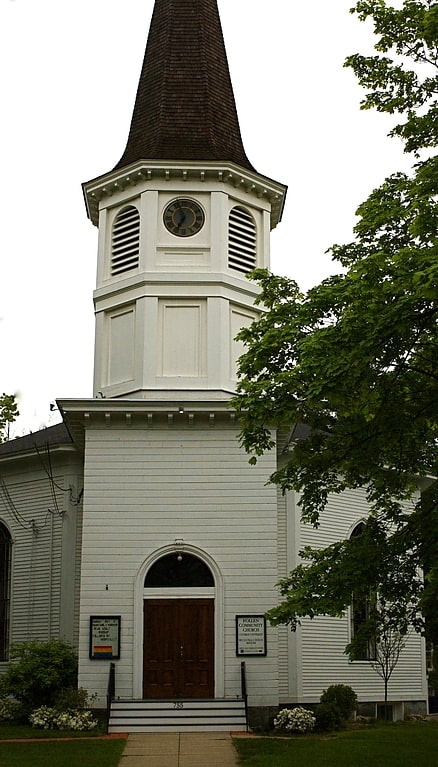
Unitarian universalist church in Lexington, Massachusetts. Follen Church is a historic Unitarian Universalist congregation located at 755 Massachusetts Avenue in Lexington, Massachusetts.[4]
Address: 755 Massachusetts Ave, 02420-3977 Lexington (Lexington)
Scottish Rite Masonic Museum & Library
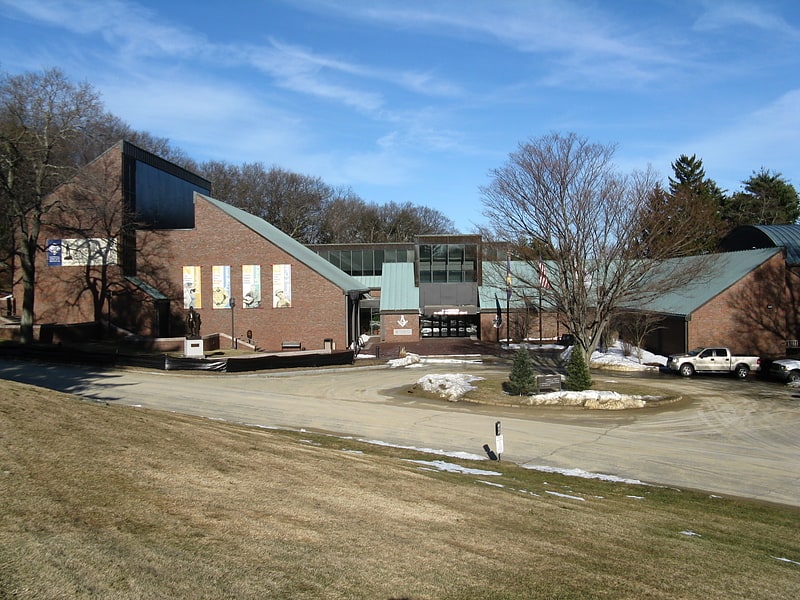
The Scottish Rite Masonic Museum & Library, formerly known as the National Heritage Museum and the Museum of Our National Heritage, is a museum located in Lexington, Massachusetts. Its emphasis is on American history and Freemasonry, and it contains the Van Gorden-Williams Library & Archives, a Masonic research library. The museum was founded in 1975, to correspond with the start of the Bicentennial of the United States and is funded by the Northern Masonic Jurisdiction of the Scottish Rite, an appendant body of Freemasonry. The same building houses their headquarters, it having moved in 2013 from another two buildings on the properties.
The museum features general interest galleries with changing exhibits about fraternal organizations such as the Masons, American history and culture, and Lexington's role in the American Revolution.[5]
Address: 33 Marrett Rd, 02421 Lexington (Lexington)
Munroe Tavern
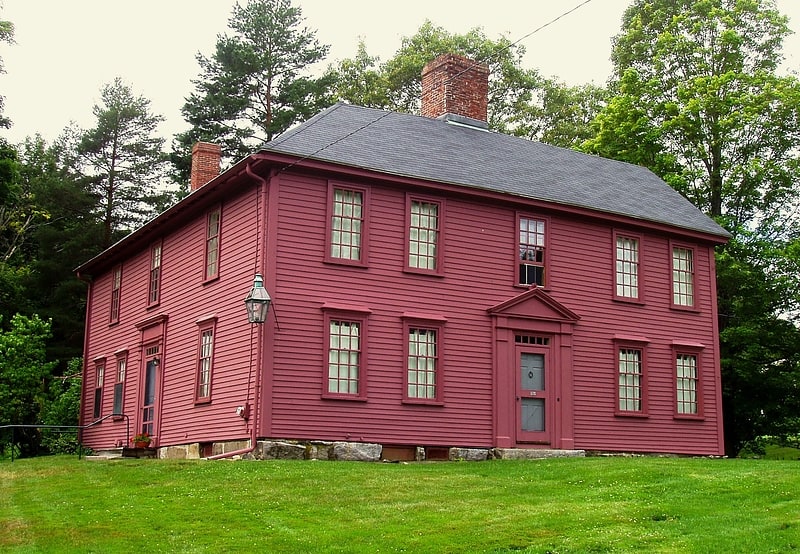
Museum in Lexington, Massachusetts. Munroe Tavern, located at 1332 Massachusetts Avenue, Lexington, Massachusetts, is an American Revolutionary War site that played a prominent role in the Battle of Lexington and Concord. It is now preserved and operated as a museum by the Lexington Historical Society, with exhibits highlighting the role and perspective of the British soldiers during the outbreak of the war. The house is open for guided tours on weekends starting in April and daily from Memorial Day weekend until the end of October.
The Munroe family line in America was begun by William Munroe (1625–1719), who was transported to New England in 1651 following his capture at the Battle of Worcester. The earliest part of the Tavern was constructed in 1735 on land then owned by David Comee. Later the proprietor rights were given to others. Another William Munroe (1742–1827), the great-grandson of the original William, purchased the house in 1770, and in October 1774 was granted a taverner's license from the town, shortly before the outbreak of hostilities in April 1775.
On April 18, 1775, one day before the outbreak of the battle, Munroe Tavern was a meeting spot for colonials, owned by William Munroe, orderly sergeant of Captain John Parker's militia company, and proprietor of the tavern until 1827. At 6:30 p.m. that evening, Solomon Brown of Lexington, who had gone to the market in Boston, returned and reported to Munroe that he had passed a patrol of British soldiers.
A large force of British troops arrived at Lexington before dawn the next morning, and shots were exchanged on the town common, beginning the Battles of Lexington and Concord. That afternoon the tavern served as the headquarters for Col. Hugh, Earl Percy, and his one thousand reinforcements. The British occupied the tavern for one and one-half hours, during which time the dining room was converted into a field hospital for the wounded, while exhausted British soldiers consumed liberal quantities of food and drink. The troops also shot down John Raymond, an infirm man residing in the family.
President George Washington dined at the Munroe Tavern when he visited the Lexington battlefield in 1789. An upstairs room now contains the table and chair at which he sat and documents relating to his trip.
In the late 19th century, a Munroe descendant who owned the house rented out part of it to artist Edwin Graves Champney (1842–1899). The house was added to the National Register of Historic Places in 1976.
The Lexington Historical Society now employs the Tavern for the Museum of the British Redcoats, providing a view of April 19, 1775 from the perspective of the King's troops. The building underwent renovation and restoration work in 2010–2011.[6]
Address: 1332 Massachusetts Ave, 02420-3809 Lexington (Lexington)
Cary Memorial Library
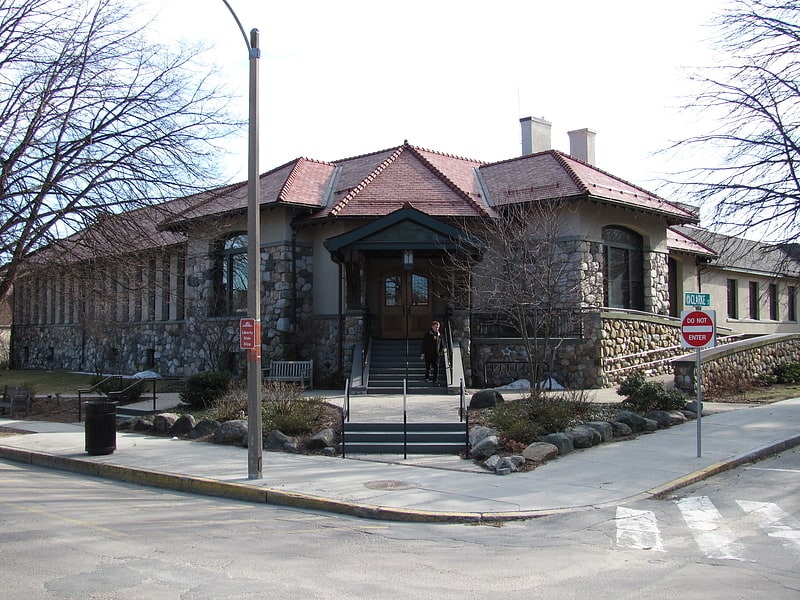
Public library in Lexington, Massachusetts. The Cary Memorial Library is the main branch of the public library in Lexington, Massachusetts. It is located at 1874 Massachusetts Avenue in the town center.[7]
Address: 1874 Massachusetts Ave, 02420 Lexington (Lexington)
Simonds Tavern
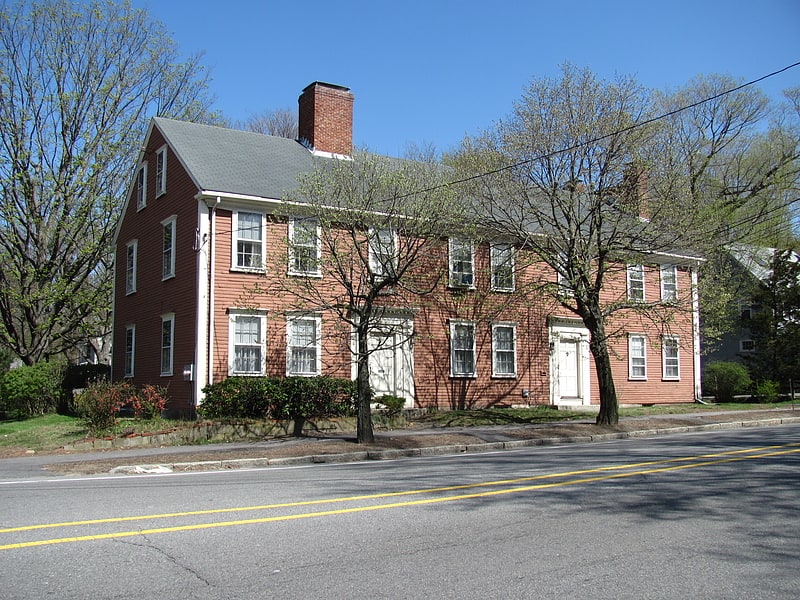
Building in Lexington, Massachusetts. Simonds Tavern is a historic tavern building in Lexington, Massachusetts. It is a 2+1⁄2-story wood-frame structure, eight bays wide, with two front entrances and asymmetrically placed chimneys. The first portion of the building was built c. 1794 by Joshua Simonds, who also ran a tavern near Fiske Hill. He began operating a tavern at this site in 1802, and enlarged the building 1810 after Bedford Street was cut through the area. The building's interior has well-preserved Federal details.
The building was listed on the National Register of Historic Places in 1976. It is now residences.[8]
Address: 331 Bedford Street, Lexington (Lexington)
Franklin School
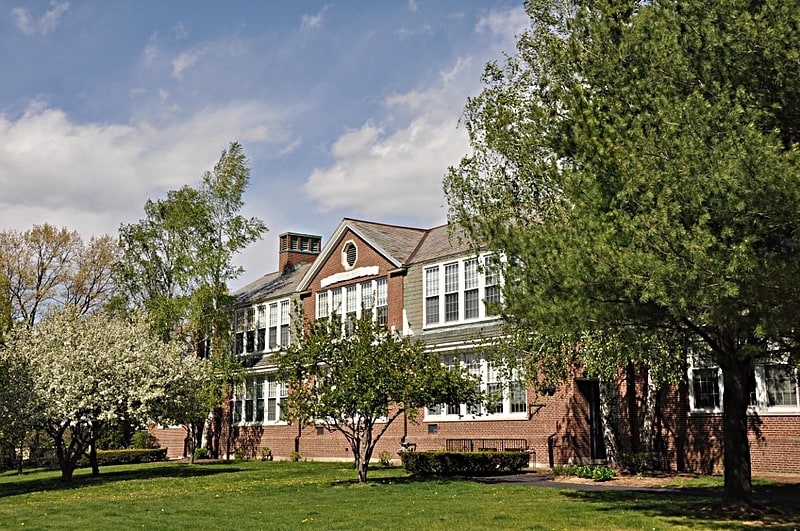
Building. The Franklin School is a historic former school building at 7 Stedman Rd. in Lexington, Massachusetts. Built in 1931, it is the only school built by the town in the period of the Great Depression. The Georgian Revival structure was designed by architects Kilham, Hopkins & Greeley. It served as a public school until 1985, when it was converted to the Franklin School Apartments. It was listed on the National Register of Historic Places in 2009.[9]
Lexington Historical Society
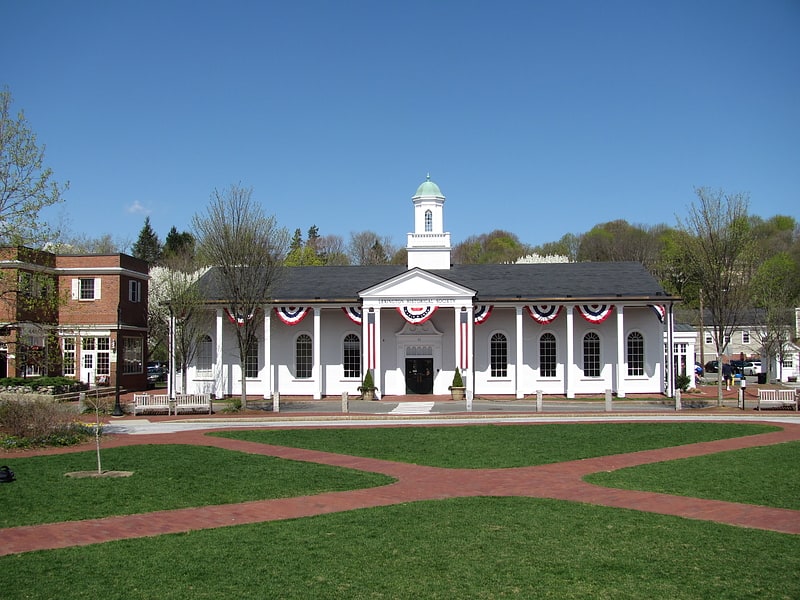
The Lexington Historical Society, founded in 1886 in Lexington, Massachusetts, preserves and celebrates Lexington's history, with a special emphasis on the town's important role in the beginning of the American Revolution. The Society presents entertaining and educational programs year-round in the restored Lexington Depot. The Depot is available for rental by Lexington community groups, residents and businesses.
The Society manages three nationally historic house museums: the Hancock-Clarke House, Paul Revere's Lexington destination; Buckman Tavern, the gathering place of the Lexington militia on April 19, 1775; and Munroe Tavern, temporary British field headquarters during the retreat from Concord to Boston. Guided tours of these houses are available April through October, with tours by appointment during the off-season. An important part of the Society's mission is educational programs that focus on Colonial life and the American Revolution for elementary, middle and high school students.
The Society's offices are located at the restored Lexington Depot, located at 13 Depot Square in Lexington Centre.
The Society also maintains an extensive collection of artifacts and archives. Many questions about Lexington history can be answered through research in the Society's Archives, a rich repository of documents, maps, photographs, and books.[10]
Jacob Whittemore House
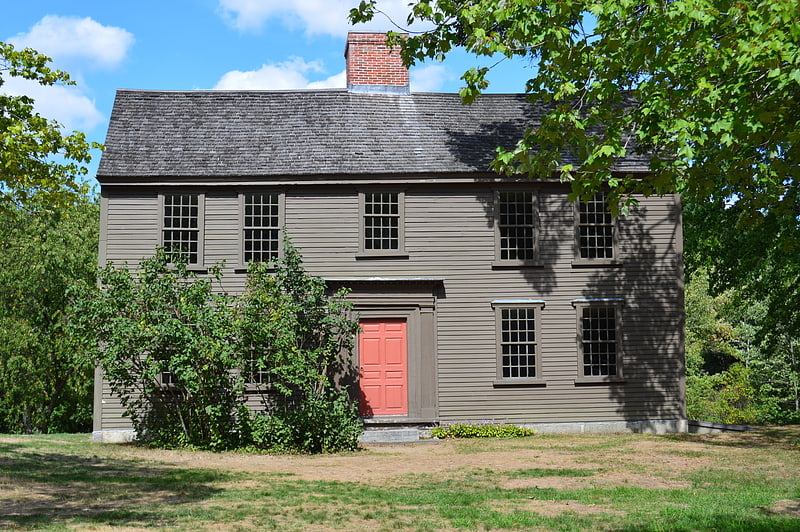
Historical landmark in Lexington, Massachusetts. The Jacob Whittemore House is a historic American Revolutionary War site in Lexington, Massachusetts, United States. It is part of today's Minute Man National Historic Park. It is located on Airport Road, just off Battle Road. It is the only house of the "witness" houses of the April 19, 1775 battles of Lexington and Concord to fall inside the Lexington town line; the others are in Lincoln or Concord.
In 1775, the outbreak of the Revolutionary War, it was the home of Jacob Whittemore; his wife, Elizabeth; their daughter, Sarah; Sarah's husband, Moses; and their three small children.
The Whittemore family sold the property in 1780.[11]